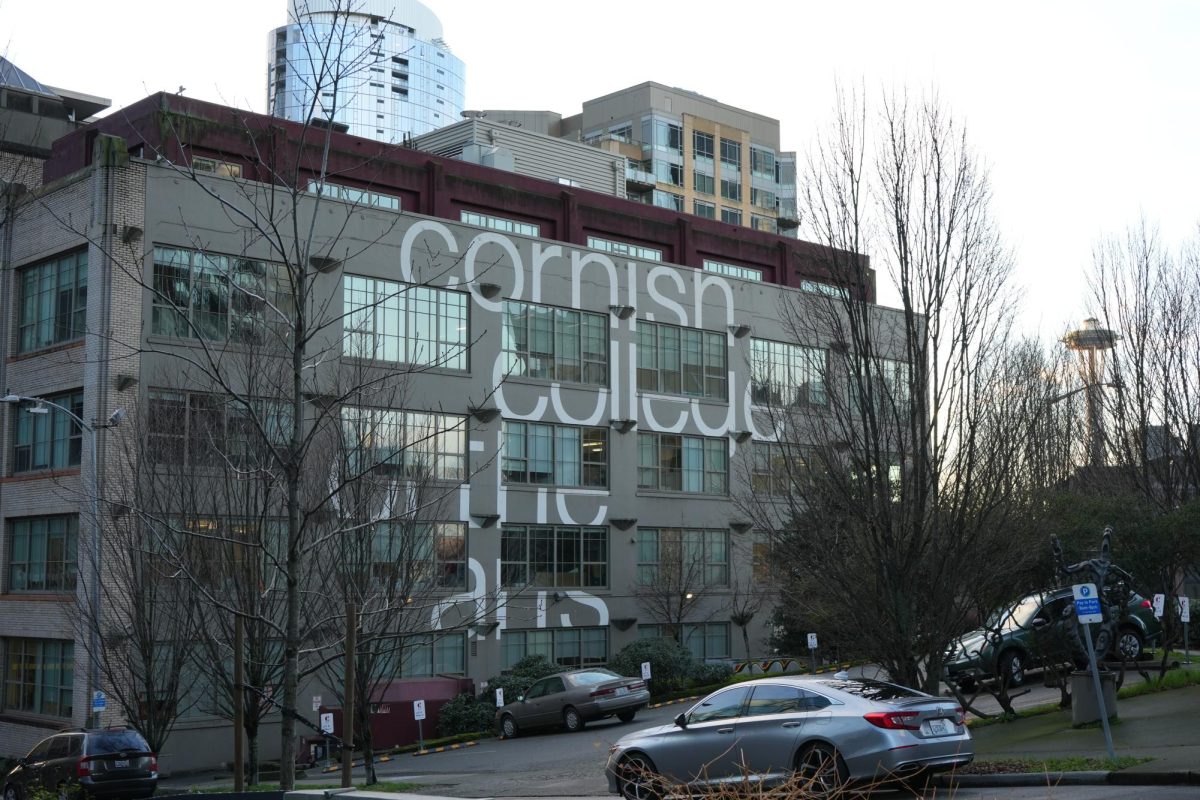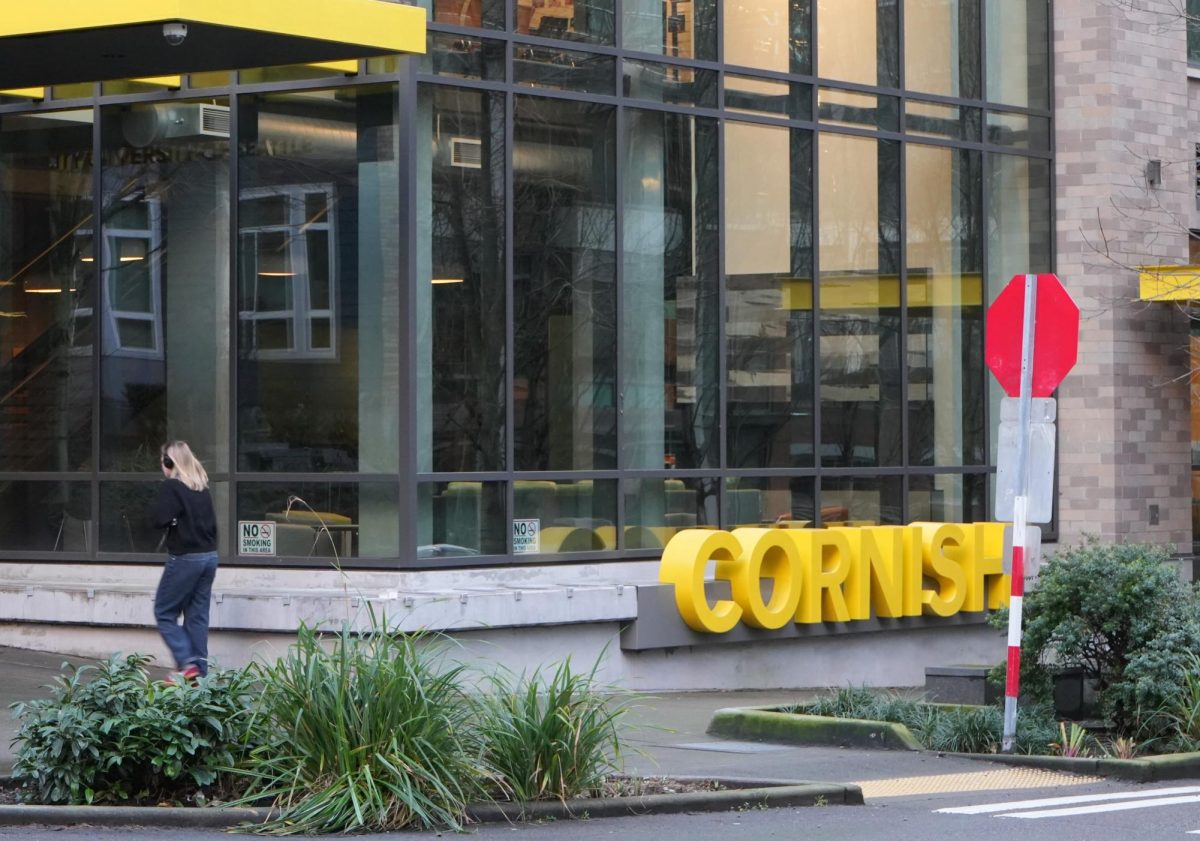From start to finish, the audience’s gaze was fixed on the stage, laughing raucously at jokes during the skit and cheering after every dance. Lively conversations filled the Campion Ballroom over a delicious dinner of traditional Filipino foods. Near the end of the night, the skit performers looked to the audience with one final line:
“And that’s Barrio!”
Originally started in 1985, Barrio Fiesta has been a beloved tradition at Seattle University for decades. The show, which is led by the United Filipino Club (UFC), includes dancing, skits, food, philanthropy and more. The event serves as an opportunity for UFC members (and volunteers) to engage in self-expression and storytelling centered around their identities.
The 31st edition of the show was hosted March 1 in the Campion Ballroom, and boasted more than 450 attendees. The performance set a Barrio record by selling out of tickets in just 10 hours, a process that can sometimes take between two days and a week. The theme for this year’s Barrio was “Maligayang Pagbabalik,” or “Welcome Home.”
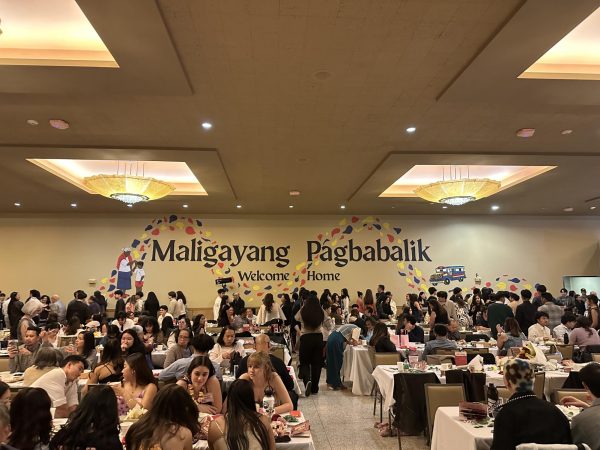
Barrio was run by co-chairs Claire Yabes, a fourth-year nursing and psychology major, and Jomi Ruiz, a third-year computer science major. Yabes and Ruiz were tasked with planning and running the show, as well as overseeing the various committees including food, decorations and choreography.
Upon reflecting on the planning process of Barrio, Ruiz gave credit to his fellow UFC members for helping bring the show to life.
“I think a big part of the whole planning process was just trust. Trust in each other, Claire trusting in me and me trusting in Claire, as well as us putting our trust in all the committees as a whole,” Ruiz said. “Genuinely, we could not have done it by ourselves. The committees are a big help and a big part of planning Barrio.”
Leading up to the performance, UFC held several rehearsals to practice running the show. In the week leading up to Barrio, the club held three tech rehearsals and a full program rehearsal the day before. This allowed UFC to fine-tune lighting, skit and dance transitions and run through all aspects of the show. This time was also spent setting up the stage and decorations.
Lauren Marie Jose, a third-year environmental studies major and decorations chair, oversaw the process of designing and setting up the ballroom for the event.
“On Wednesday, half of us were in the ballroom setting up the backdrop for the stage and half of us were in Pigott where the rest of the rehearsals were,” Jose said. “And then Thursday, Friday and Saturday morning, we were in the ballroom making sure everything was set up, and double-checking the area.”
Jose mentioned that planning goes all the way back to the beginning of the school year.
“The decorations committee starts planning in the fall quarter, just logistically what we’re going to do,” Jose said. “We start weekly committee meetings and volunteer meetings in January.”
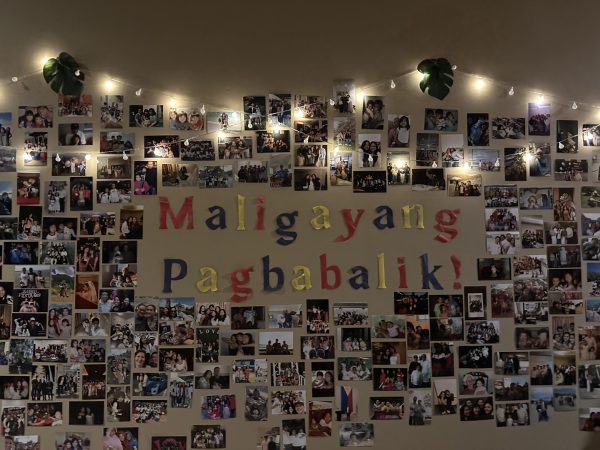
Following months of preparation, the 31st Barrio Fiesta kicked off at around 5 p.m. Saturday.
The Campion Ballroom was beautifully decorated. Immediately upon entering the ballroom, attendees were greeted with an entryway lined with family photos of UFC members. Candles, flowers and white tablecloths were spread across long tables. The words “Maligayang Pagbabalik, welcome home” were displayed on the wall and surrounded by red, blue and yellow cut-out shapes.
The program started with welcoming speeches, a land acknowledgment and the American and Filipino national anthems. Following the invocation, UFC took on the tall task of feeding the 450 attendees in the ballroom.
Kiana LaBella, a fourth-year civil engineering major, was one of the food committee chairs. She said that the food committee based the foods off of the skit and tried to pick foods that were “welcoming and homey,” referencing the “Welcome Home” theme of Barrio this year.
The menu was packed with several delectable Filipino dishes, including chicken adobo, beef kaldereta, vegetable pancit, Filipino spaghetti and rice. For dessert, attendees were given taho, a dessert made with silken tofu, sago pearls and a brown sugar sauce. The food was served by Chi Theta Psi, Seattle U’s Filipino fraternity.
“We were considering street foods for a little bit, because [the skit] took place in the Philippines. That was where we got the idea for taho. That’s a very street food type of dessert,” LaBella said. “We ended up going with more homecoming-type things because [Barrio] was about going home. So we tried to find comforting dishes that everybody kinda knew.”
Kendall Kageyama, a third-year psychology major, attended the show and thought the dinner was nostalgic, bringing her back to her childhood.
“I thought it was really authentic, very true to a lot of Filipino dishes that I had growing up,” Kageyama said.
During dinnertime, attendees were entertained by several singing and dancing performances. The dinner show included dances from Seattle U’s Hui O Nani and Rythmix clubs. Following dinner, it was time for the main show to start.
The main performance kicked off with the beginning of Barrio’s annual skit. An integral part of the skit was the set. Various props were used throughout the night, including cut-out cars, benches and colorful costumes. Jose mentioned that the decorations committee also worked alongside the stage chairs to plan the stage and props.
“[The stage chairs] ensure that each scene is set for the different scenes in the skit. We make the props and we work collaboratively with them to figure out what they need and how they want the props to be for certain scenes,” Jose said. “Their job as actors and as stage chairs, they have to take those props on and off and make sure that the stage is ready for actors to use during Barrio.”
The skit’s story followed Irene, a single mom who left the Philippines to move to Seattle, and her two children, Reyna and Arnel. As a young woman, Irene left the Philippines with a passion for dancing and the hope of leaving a town she felt was too small for her. However, after getting divorced from her American husband and having to raise her two children on her own, Irene was unable to pursue her dreams.
After not returning to her hometown since before her kids were born, Irene received a call from her sister Maria with bad news: her mother was dying. For the first time in her kids’ lives, they traveled to the place where Irene grew up, where the majority of the skit took place.
Second-year Psychology Major Alyssa Oshiro was one of the directors for the skit. She said that she and the other directors wanted to incorporate the theme of “Welcome Home” in the show.
“We figured that we would make it take place in the Philippines itself, just so that we could [show] our home really is our Filipino culture,” Oshiro said. “We kind of pulled from our own experiences, we have Reyna and Irene, our main characters, they fill that older sibling role… We also went over themes of family in general, and how it feels to be disconnected to your culture, especially as a Fil-Am.”
The skit took several pauses throughout the night to weave in the many dances that were tied to parts of the story. The modern dance, which included more than 50 performers, happened during a scene where Arnel was at dance practice in Seattle. When the characters visited the Philippines, they witnessed several traditional Filipino dances including Gaway Gaway, Binasuan and Maglalatik.
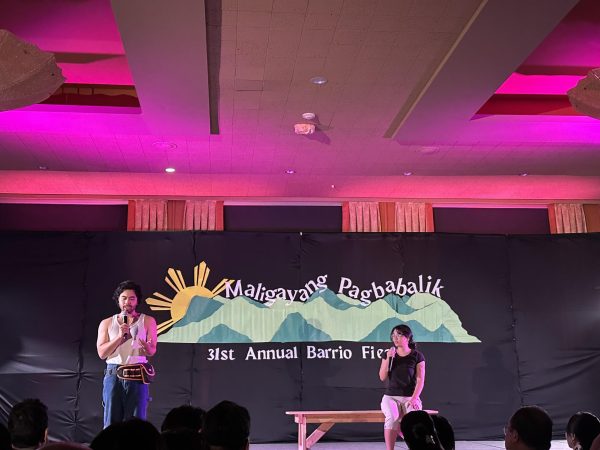
By the end of the skit, Reyna and Arnel learned a lot about their Filipino heritage, especially through dancing. After Irene was able to rekindle her relationship with her mother before she passed away, the family headed back to Seattle. The skit ended with Arnel’s dance team performing two Tinikling dances, which involved performers dancing over two bamboo poles being moved back and forth across the ground. The Tinikling dances had a modern twist—showcasing the main characters’ love of both their Filipino and American cultures.
Ruiz explained how he enjoyed choreographing one of the Tinikling dances.
“My favorite part [of Barrio] was being able to choreograph with one of my best friends, Ben. I’ve known him since my freshman year of high school, and being able to choreograph a dance that we both love, Tinikling, and adding a modern twist on it using the song ‘Lemon’ by N.E.R.D and Rihanna, that was my favorite part,” Ruiz said.
Following the conclusion of the skit and dances, UFC honored its graduating seniors with a tribute video, as well as a thank you video for Barrio Co-chairs Ruiz and Yabes. The show ended at around 10:30 p.m., marking the end of a busy week—and a culmination of months of hard work—for UFC members.
Upon reflecting on the show, UFC members were happy with their performance and believed it went smoothly.
“[It] all went well,” Oshiro said. “I’m just super proud of [my skit co-chairs], and I hope they understand how much effort went into this, it was a long year of hard work, it all paid off.”
Third-year Political Science and Public Affairs Major Jacob Caddali was another one of the skit co-chairs. He echoed Oshiro’s sentiment, expressing his satisfaction with the show.
“I think Barrio went great, working as the skit chair, it was really amazing sharing a story about reconciliation and returning home,” Caddali said. “I hope many families in the audience could relate.”
Through entertaining acting, impressive dancing and an amazing meal, this record-breaking Barrio Fiesta was one to remember.



